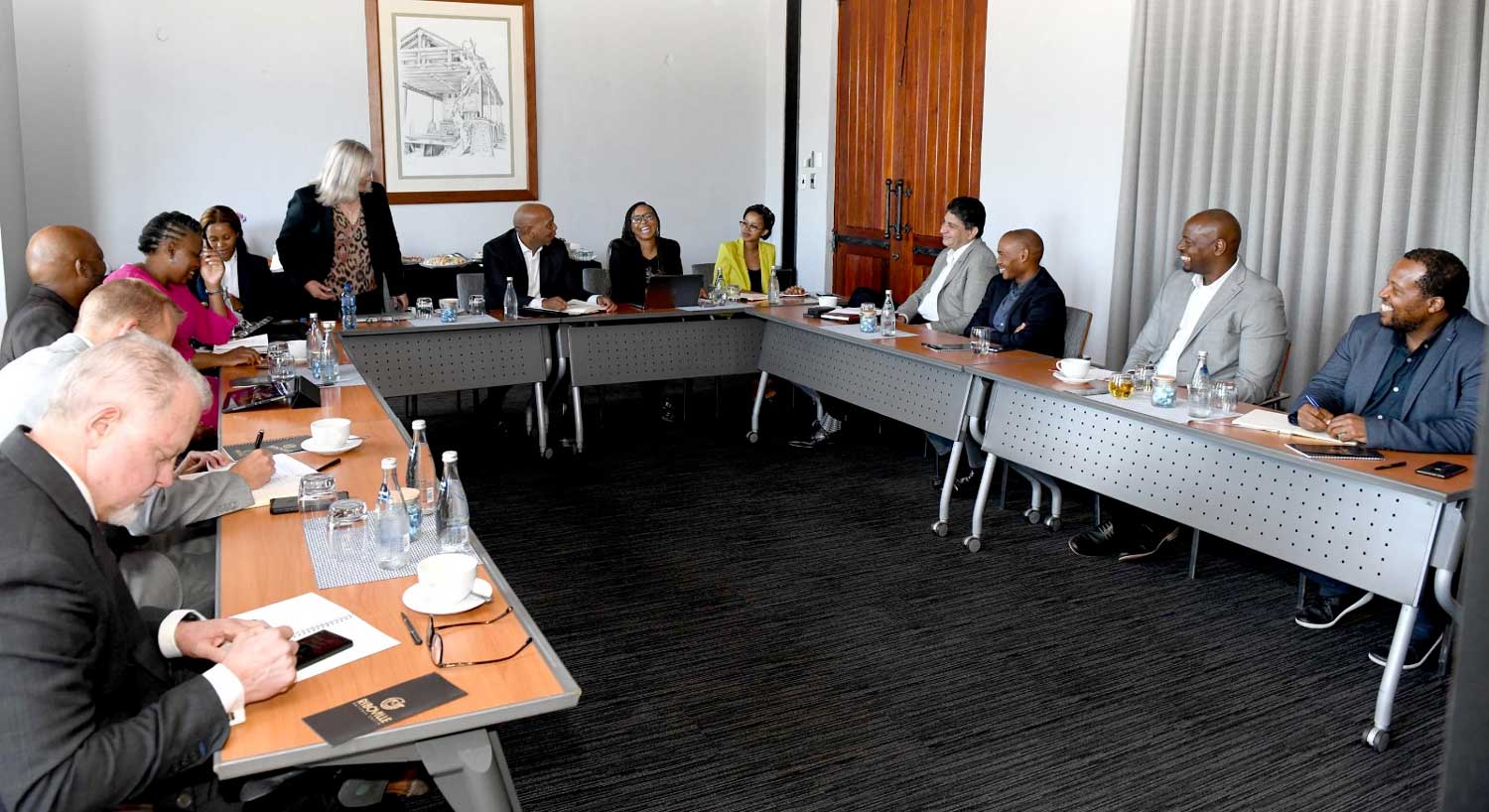
Electricity minister Kgosientsho Ramokgopa has met with senior executives in South Africa’s telecommunications industry as one of his first engagements since being appointed to the newly established portfolio by President Cyril Rampahosa.
In tweets on Thursday, Ramokgopa said he met with mobile network operators “to understand their energy needs as it related to the protection of their assets and efficiency of their operations in light of load shedding and the lack of power generation”.
A series of photos shared by the minister on Twitter showed he met with, among others, Vodacom Group CEO Shameel Joosub, MTN South Africa CEO Charles Molapisi and Liquid Intelligent Technologies CEO Deon Geyser.
In a subsequent tweet, Ramokgopa said the meeting “also explored what it is that the network operators can do to help resolve the issue of power generation and contribute to the grid”.
On Monday, Ramaphosa announced Ramokgopa’s appointment as electricity minister – a newly created portfolio that is located within the presidency – while leaving his political ally Gwede Mantashe in charge of the energy ministry and Pravin Gordhan in charge of public enterprises, and by extension, Eskom.
Amid criticism, Ramaphosa last month defended his decision to create a ministry for electricity, denying at the time that having three ministers looking after Eskom and the energy sector would result in a turf war.
“This appointment will ensure that there is a minister who is ultimately responsible for resolving load shedding and who is able to work with all fellow cabinet ministers, departments and entities to do so,” Ramaphosa said.
Hit hard
South Africa’s telecoms operators have been hit hard by load shedding, with companies including Telkom, MTN and Vodacom investing billions of rand in battery backup solutions and generators in an effort to keep their networks running during the severe load shedding that’s been taking place regularly since the second half of 2022.
In January, TechCentral polled the major operators to determine how load shedding – especially stage 4 and higher – is impacting them.
- MTN South Africa said it has been rolling out batteries to its towers aggressively, while also providing generators and alternative power supplies, such as solar. It has upgraded the batteries at more than four in five of its high sites. Generators have also been installed at many sites to counter the effects of stage-4 and higher load shedding.
- Vodacom South Africa said it is “doing all we can” to mitigate the effects of widespread load shedding. This includes deploying backup power solutions, including generators, to “as many sites across the country as possible”. The country’s largest network operator by subscribers spent R2-billion on batteries alone over the past two years.
- Telkom said it has invested in securing alternative energy at most of its sites, including standby generators. “On the whole, these work well, and we work around the clock to ensure minimal disruption for our customers,” the company said. “However, the sustained higher stages of load shedding currently being experienced significantly impact our costs of doing business, with recharge cycles for alternative power sources being significantly lower and operating costs soaring on inputs such as diesel and the additional man hours needed to keep sites operational.”
 Last December, Vodacom’s Joosub – speaking in December in his capacity as chairman of the recently launched Association of Communications & Technology, an industry body – decried the impact of Eskom’s continued power cuts.
Last December, Vodacom’s Joosub – speaking in December in his capacity as chairman of the recently launched Association of Communications & Technology, an industry body – decried the impact of Eskom’s continued power cuts.
“South Africa’s protracted and more frequent power cuts are having a significantly negative impact on the country’s mobile network operators,” Joosub said.
“Instead of investing in rural infrastructure roll-out and in deploying new technologies, operators, including Vodacom, have been forced to spend billions of rand just to ensure they are able to continue delivering services to consumers when the lights go out,” he said.
Read: Electricity minister will oversee entire crisis response: Ramaphosa
“It will require an extraordinary amount of money to fully mitigate even the likes of stage-4 load shedding, which ultimately would result in a substantial increase in the cost to communicate,” Joosub said. – Additional reporting by Tadek Szutowicz, © 2023 NewsCentral Media




